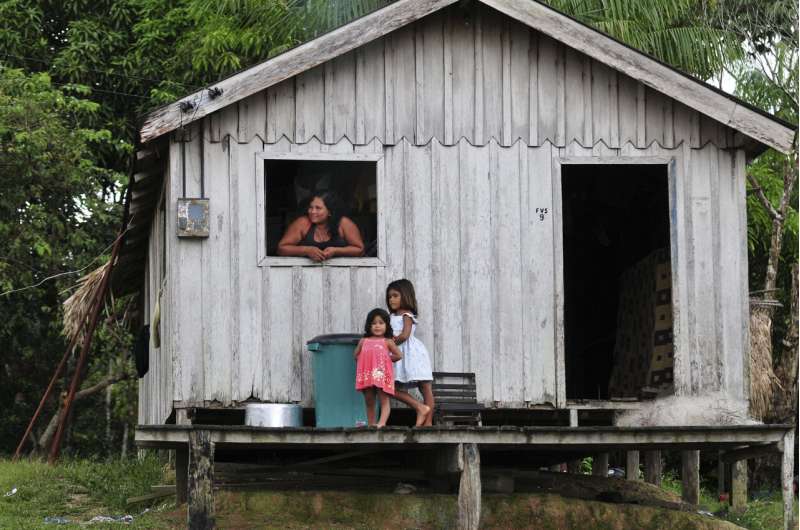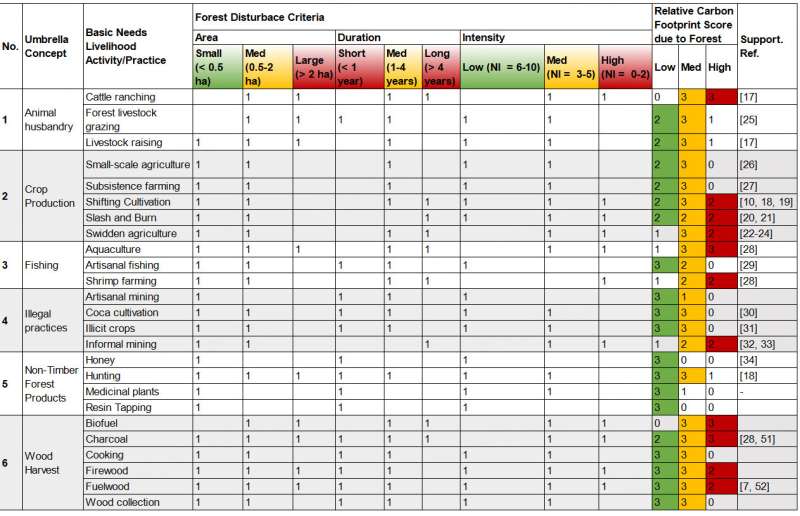This article has been reviewed according to Science X's editorial process and policies. Editors have highlighted the following attributes while ensuring the content's credibility:
fact-checked
proofread
A downward spiral: When subsistence communities struggle, forests do too

Subsistence communities often rely on natural resources to meet their basic needs. 90% of people globally living in extreme poverty depend on forests for at least part of their livelihoods, according to the FAO. These groups are generally not viewed as drivers of forest loss and degradation; in fact, they are traditionally linked with low environmental and carbon footprints.
However, new assessments suggest that this is changing due to socioeconomic factors that spur demands for natural resources.
What turns 'sustainable livelihoods' into a deforestation driver?
In the review "Carbon footprints of forest degradation and deforestation by 'basic-needs populations'", published in October 2022 in the journal Carbon Footprints, researchers assessed 161 basic needs communities across 101 scientific studies and found that livelihood activities by basic needs populations can become unsustainable via changes in context and socioeconomic factors, leading to "environmental downward spirals," which in turn increase carbon footprints through deforestation and forest degradation.
Wendy Francesconi, the paper's first author, is a Senior Environmental Scientist (leading research on Ecosystem Services and Environmental Impact) at the Alliance of Bioversity International and CIAT, an international research center.
She explains that this study aimed to identify what livelihood practices are more often associated with forest loss and degradation: "This review covered some of the most commonly known livelihood and economic activities carried out by rural and traditional communities; from animal husbandry, crop production, and fishing; to illegal practices, non-timber forest products, and wood harvesting."
These practices should be recognized for both their global and community level effects, Francesconi says, "We do not know the true extent of poverty-driven deforestation and forest degradation. While it is well understood that the industrial and commercial sectors are the main contributors to the climate and biodiversity crisis, subsistence communities will be directly impacted by immediate changes in the provision of ecosystem services, as they heavily depend on these."

Filling in the gaps with context-based solutions
Poverty-driven deforestation and degradation is a complex, hard to measure issue. But by better understanding unsustainable triggers and practices, researchers can also identify market-driven, inclusive, and targeted solutions to help slow or reverse this potentially significant source of land cover change and increasing carbon emissions.
Building on the Alliance of Bioversity and CIAT's longstanding research with subsistence communities to understand the relationship between agriculture, land cover changes, and resource extraction, Francesconi says that solutions will be as varied as the number of subsistence communities: they should be adapted to a community's culture and customs, geographic context, food and production systems, and include market-based transformations that promote sustainable livelihood activities.
More information: Wendy Francesconi et al, Carbon footprints of forest degradation and deforestation by "basic-needs populations": a review, Carbon Footprints (2022). DOI: 10.20517/cf.2022.10
Provided by The Alliance of Bioversity International and the International Center for Tropical Agriculture





















